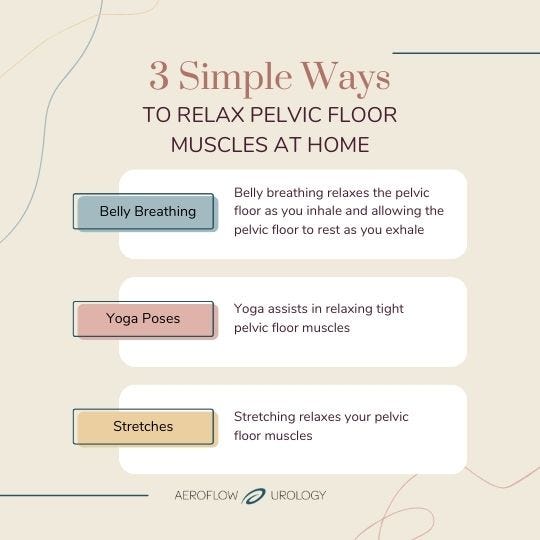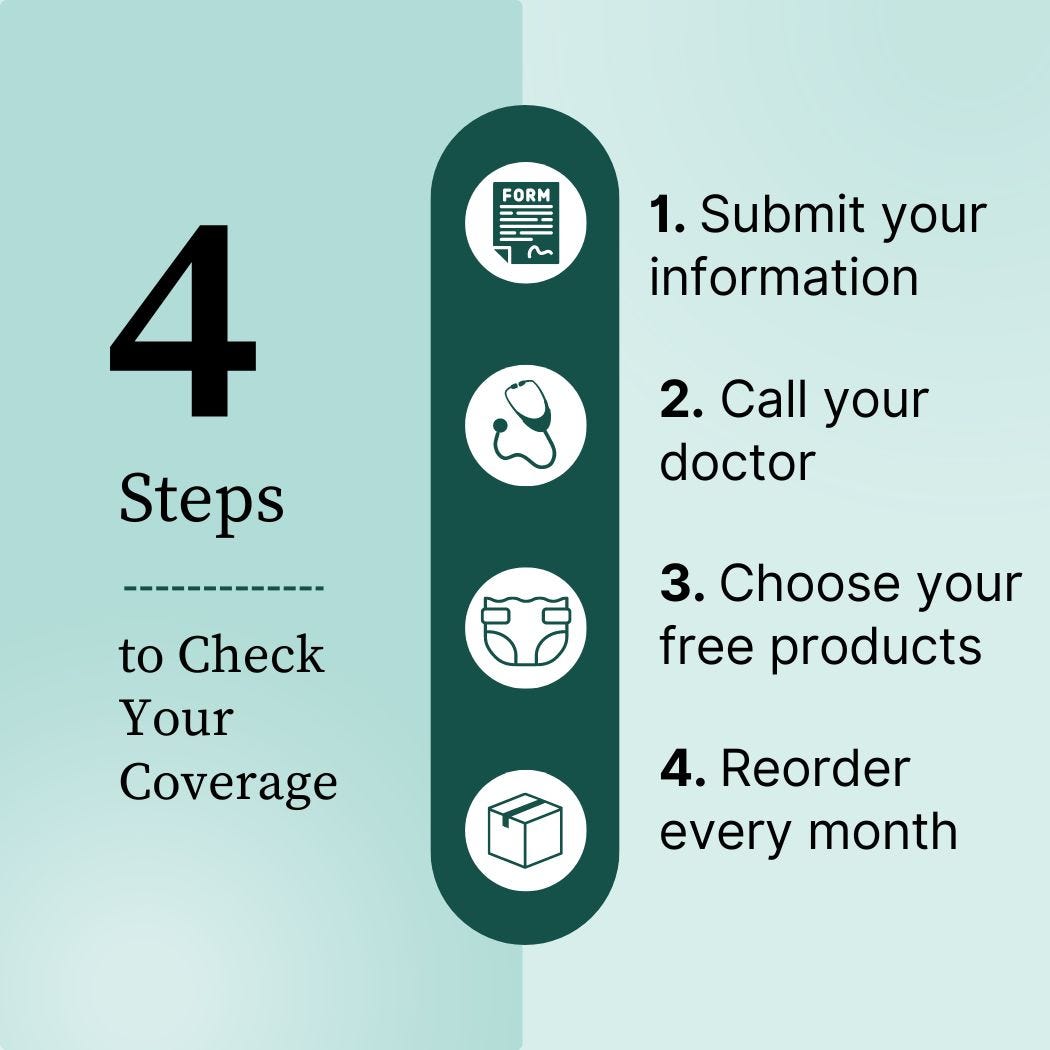Most of us experience life events that can cause stress and anxiety, and some of us may deal with these emotions every single day.
It’s well known that these feelings can be harmful to our bodies- think hypertension, heart attack, and stroke- but did you know stress and anxiety can also contribute to pelvic floor dysfunction?
On top of that, it’s not just stress and anxiety alone that can cause pelvic floor issues. Factors like certain movement habits, history of sexual abuse, and obesity can also cause dysfunctions and tightening of these important muscles.
Discover the cause of your tight pelvic floor and learn how to relax it with the help of our Licensed Doctor of Physical Therapy, Susie Gronski, PT, DPT.
What Is Your Pelvic Floor?
Your pelvic floor is a group of muscles and nerves that control when you empty your bladder and bowels (continence) and support sexual health and function.
They also support your pelvic organs, keeping them in place and preventing issues like pelvic organ prolapse (POP). The pelvic floor muscles connect to your front pubic bone, your back sacrum, and your sitting bones on both sides of your pelvis. You can think of these muscles as a hammock that cradle your:
Check Your Eligibility
2 Easy Steps
Discover the continence care essentials available through your Medicaid plan.
- Bladder
- Urethra
- Uterus and vagina (female)
- Prostate (male)
- Rectum
Your pelvic floor muscles also make up a part of your core group of muscles that support your lower back and pelvic area. You use your core when you engage in all kinds of physical activities, such as running, jumping, and exercising.
Every time you do these types of physical movements, your pelvic floor muscles are being used alongside your core, so your pelvic floor must be adaptable and strong enough to meet these high-intensity impact demands. If these muscles are too weak to adapt and support the demands placed on them, it can lead to certain pelvic floor issues.
What Is a Tight Pelvic Floor?
In some cases, a tight pelvic floor is referred to as “hypertonic pelvic floor,” and while you may read about this online, it is medically inaccurate to use this terminology. Hypertonic pelvic floor should only be used when describing true neurological cases that impact a person’s muscle tone as such.
We do not have convincing evidence to state with confidence that greater tone of pelvic floor muscles causes issues. The evidence of higher activity (if present) might be conscious control or reflexively activated by bladder and rectal filling or elimination. This higher activity and greater tone may also reflect emotional states (anxiety, fear, anticipation of pain, etc.) or learned responses, might be enhanced corticomotor (brain) excitability and changes in local reflexes to muscles, and changes in the passive (viscoelastic) properties of pelvic floor muscles. We don’t have any evidence if and how tone is related to abnormal pelvic floor function.

Causes & Risk Factors of Tight Pelvic Floor
There isn’t one specific cause of pelvic floor dysfunction, but the following risk factors may contribute to the condition:
- Stress, anxiety, or depression
- Injuries or trauma to the pelvic floor due to childbirth
- Injuries or trauma due to pelvic surgery such as hysterectomy or prostate surgery
- Nerve damage in the pelvic area
- Endometriosis
- Interstitial cystitis
- Irritable bowel syndrome (IBS)
- Obesity
- Aging
- History of sexual abuse or assault


- History of holding in urine or fecal matter
- Painful bladder syndrome
Signs of Pelvic Floor Dysfunction
So, how will you know if you have a "tight pelvic floor?" Unfortunately, there’s currently no scientific evidence that proves you’ll have one symptom or another when it comes to having a tight pelvic floor. It’s best to see a pelvic floor therapist to determine signs and symptoms. Listed below are symptoms of pelvic floor dysfunction that may contribute to pelvic floor tone issues.
Symptoms of Pelvic Floor Dysfunction:
- Urinary incontinence: Voiding your bladder more often than usual, feeling sudden and intense urges to urinate, urine leakage
- Urinary retention: Inability to begin voiding your bladder, inability to empty your bladder completely
- Fecal impaction: Constipation or inability to begin emptying your bowels
- Bladder pain
- Pain while making a bowel movement or after emptying bowels
- Pain while passing gas
- Pain while peeing


- Tailbone (coccyx) pain
- Painful intercourse
- Painful ejaculation
- Inability to have an orgasm
- Erectile dysfunction (ED)
Relaxing Your Pelvic Floor Muscles at Home
Use these tips to relax your pelvic floor muscles in the comfort of your own home.
1. Belly Breathing
Your diaphragm is a muscle that helps you breathe and is located below your heart and lungs. Believe it or not, your diaphragm works alongside your pelvic floor to increase its function and strength. Sometimes when you breathe, you take shallow breaths that may not expand your lungs fully.
Diaphragmatic breathing, also called belly breathing, focuses on breathing with your whole diaphragm and belly, allowing you to take full breaths, relaxing the pelvic floor as you inhale and allowing the pelvic floor to rest as you exhale.
How to Belly Breathe:
- Lie flat on your back in a comfortable position
- Put a hand on your stomach below your rib cage
- With your hand on your belly, inhale with a deep breath, counting to 4, feeling the hand on your stomach rise as you inhale
- With your hand still on your stomach, exhale deeply, counting to 5, feeling the hand on your stomach fall as you exhale
- Repeat taking deep breaths for around 5 minutes
Try to practice belly breathing for 5 minutes each day to promote relaxation in your pelvic floor muscles.
2. Yoga Poses
Happy Baby Pose
- Child’s Pose
-
Get on your hands and knees in a tabletop position
-
Move your knees as far apart as comfortable for your body while touching your big toes together behind you
-
Fold your torso forward toward the floor, attempting to touch your chest and forehead to the floor
-
Stretch your arms out alongside your body with palms facing up or stretch your arms out in front of you along the sides of your head
-
Hold this position for 30 seconds to 1 minute while belly breathing
Child's Pose
- Get on your hands and knees in a tabletop position
- Move your knees as far apart as comfortable for your body while touching your big toes together behind you
- Fold your torso forward toward the floor, attempting to touch your chest and forehead to the floor
- Stretch your arms out alongside your body with palms facing up or stretch your arms out in front of you along the sides of your head
- Hold this position for 30 seconds to 1 minute while belly breathing
3. Stretches
Stretching is a great way to strengthen and relax muscles before a workout, but stretches can also benefit your pelvic floor muscles. Practice these stretches at home to relax your pelvic floor.
Adductor Stretch
- Lie on your back in a comfortable position
- Place the soles of your feet together and put your knees out to your sides
- Drop your knees as far as you can to each side, opening your pelvic area
- Place your hands on the insides of your thighs to help extend the open stretch
- Hold this position for 30 seconds while belly breathing
Hip Stretch
- Lie on your back in a comfortable position
- Bend your knees and put one foot on the opposite knee
- Lift up your bottom leg and hold your thigh with your hands
- Bring your bottom leg toward your chest
- Hold this position for 30 seconds while belly breathing
- Repeat for the opposite leg


Treatments for Pelvic Floor Dysfunction
If you’ve been diagnosed with pelvic floor dysfunction, you should first see a pelvic floor physical therapist (PFPT). They may be able to help you relax your pelvic floor muscles. Your PFPT may also provide you with treatment options, such as:
- Biofeedback: Can teach you how to coordinate your pelvic muscles
- Pelvic floor massage: Can provide relaxation to your pelvic floor
- Medications: May help manage pelvic pain, improve urinary incontinence symptoms, or relieve constipation
Preventing Pelvic Floor Dysfunction
Making certain lifestyle changes will ensure that your pelvic floor stays healthy and your urinary system functions at optimal levels. Try the following lifestyle adjustments at home to improve pelvic floor health.
1. Watch Your Diet
Eat a healthy diet that’s full of fiber, fresh fruits and vegetables, and whole grains. You should stay hydrated as it helps to prevent urinary issues like urinary tract infections (UTIs). Avoid foods that irritate the bladder and cause it to spasm, like tomato-based products, alcohol, caffeine, and spicy foods.
2. Listen to Your Body
A potential cause of tight pelvic floor muscles is habitually holding urine and fecal matter. Go to the bathroom and relieve yourself when your body tells you to do so.
3. Maintain Healthy Weight
Obesity is one of the risk factors behind tight pelvic muscles, so try to maintain a healthy weight. Consult your healthcare provider to find a weight that is healthy for your body type.
4. Exercise Your Pelvic Floor
You exercise your pelvic floor muscles by doing Kegel exercises. And they aren’t just beneficial for women’s health! Men can do pelvic floor exercises, too.
Tips for Reducing Stress & Anxiety
Stress is a part of life for many of us, but there are ways to manage it so that it doesn’t cause issues like pelvic floor dysfunction and beyond. Use these simple tips to manage your stress and anxiety levels.
- Be aware of tension. Pay attention to how your physical body is feeling. If any area of your body feels tight due to stress or anxiety, it may be extending to your pelvic floor muscles. If you are tense, try stretching, yoga, or other relaxation techniques.
- Use relaxation techniques. Meditation, daily walks or exercise, belly breathing, journaling, and talk therapy can all help reduce stress and anxiety.
- Take care of yourself. Put self-care first every day! If you’re feeling anxiety or stress, set time aside to do what you need. Take a warm bath, go for a walk, visit with those close to you, or whatever other activities relax you best.
References
Hypertonic Pelvic Floor: Symptoms, Causes & Treatment. (n.d.). Cleveland Clinic. https://my.clevelandclinic.org/health/diseases/22870-hypertonic-pelvic-floor
5 Ways to Relax Your Pelvic Floor! (2021, January 28). Pelvic Health and Rehabilitation Center. https://pelvicpainrehab.com/pelvic-health/14859/5-ways-to-relax-your-pelvic-floor/
Jenkins, S. (2022, May 5). How To Relax Your Pelvic Floor. National Association for Continence. https://nafc.org/bhealth-blog/how-to-relax-your-pelvic-floor/
LEARN TO Relax Your Pelvic Floor Muscles. (n.d.). Retrieved April 13, 2023, from https://www.bidmc.org/-/media/files/beth-israel-org/centers-and-departments/rehabilitation-services/relax_your_muscles_sheet_2016_05_rev.pdf
Pelvic floor tension myalgia. (n.d.). Www.dignityhealth.org. Retrieved April 13, 2023, from https://www.dignityhealth.org/conditions-and-treatments/womens-services/pelvic-floor-tension-myalgia
Magazine, W. R. (2020, April 13). 4 Moves To Loosen Tight Pelvic Floor Muscles. Women’s Running. https://www.womensrunning.com/health/4-moves-loosen-tight-pelvic-floor/
Disclaimer
Information provided on the Aeroflow Urology blog is not intended as a substitute to medical advice or care from a healthcare professional. Aeroflow recommends consulting your healthcare provider if you are experiencing medical issues relating to incontinence.












